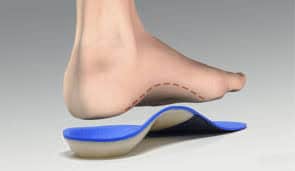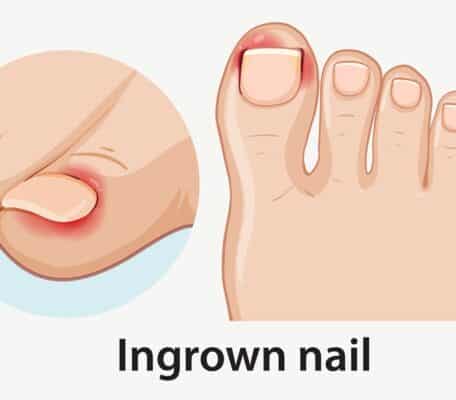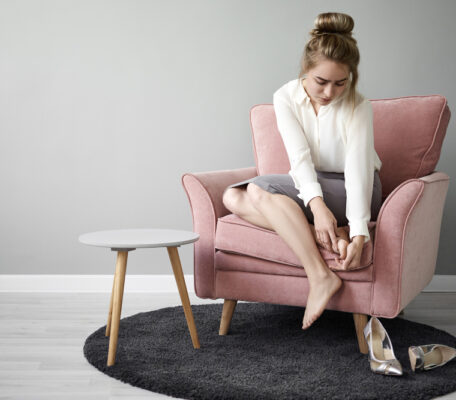Custom orthotics can be an effective way to treat many different foot conditions. From improving foot function to reducing heel pain, and treating specific foot problems such as plantar fasciitis and flat feet, custom foot orthotics are a key tool for improving foot health.
However, you might be wondering how to get custom orthotics. Rather than buying mass produced over the counter treatments, specially made devices designed for your individual foot can be highly effective. But what is the multi step process behind custom orthotics, and how easy is it to get them made for you?
Prescription orthotics – the process
Here at Foot Solutions, we are experts in all aspects of foot health. We’ve been making custom orthotics for our customers for many years, and we’ve seen first hand the improvement custom made orthotics can make. Here’s our guide to the full process of getting your custom orthotics made, and getting you back on your feet.
The initial consultation
The first step towards getting custom orthotics involves a consultation with a podiatrist or orthotist. So go ahead and make that appointment.
Lifestyle, medical history, and foot examination
A foot care professional will be able to assess your foot issues, taking into account information about your lifestyle as well as your symptoms and medical history. Your foot specialist will examine your lower extremities, feeling for discomfort and foot pain as well as foot position.
Symptom questions
They are also likely to ask you questions about your condition. When did you first notice the foot and ankle pain? How long have you had the discomfort? Have you noticed which factors make the symptoms worse, and what makes them better?
Further steps
They may perform a gait analysis in order to see how your movements are affected by the way you use your body. This might give them important clues as to the roots of the problem.
Assessment and gait analysis
Gait analysis often forms a key part of the assessment process. The idea is to closely observe the way the patient moves, as any abnormalities or imbalances in their gait could be causing numerous foot pain problems, from foot fatigue to foot deformity.
Gait analysis is sometimes performed by simple observation, but is often aided by modern technology. The patient is usually filmed walking or running, and the video can then be slowed down to show their movements in slow motion. This allows the clinician to observe the gait in close detail, for instance noticing how the patient’s foot strikes the ground, or the ways in which they could support and improve function in the feet.
A custom prescription
Having fully assessed your feet, your podiatrist or foot orthotics specialist will be able to create your custom foot orthotics prescription. Rather than a mass produced product, they will have taken into account your specific condition and contributing factors, in order to create orthotic devices unique to you.
This could mean orthotic insoles that aim to improve arch structure by giving better arch supports. Or it could mean foot cushions positioned carefully to aid painful bunions, ulcers or heel spurs. Perhaps your custom insoles will be designed to hold your feet in a more aligned position, improving your posture and overall back health.
The orthotics fabrication process
Once a full assessment of the condition and your orthotic needs has been made, the manufacturing process can begin.
An accurate impression of your feet will be taken. This can be done using wet plaster strips and paris casts, or in many modern instances, a 3D scan of your foot and ankle. This will ensure a perfect fit – and the perfect fit is critical for custom orthotics to be effective.
Fitting and follow-up
Once your custom orthotics are made, your foot specialist will call you back in to have further fittings. They will ensure that your custom orthotic fits correctly inside your shoes, and that it does not create an additional discomfort. Your podiatrist will also want to tell you how to break in the custom orthotic correctly, and how to tell if there are any problems with the device.
It’s possible that your foot orthotics will need further customisation and adjustment, in order to get them working to their best ability.
Types of orthotics for feet
The benefit of custom orthotics is that they can be made with specific features tailored to your needs. This includes shape, materials, and of course, their intended function.
Orthotics can be customized in a variety of materials. A doctor will write a prescription for an orthotic material based on what condition and symptoms a person has. For instance, more rigid materials are likely to be indicated where feet need more structure and to be held in a neutral position. Examples of rigid materials used for custom orthotics include carbon fibre or plastic.
Conversely, some types of custom orthotics will work better using flexible and cushioning materials. These types of custom orthotics are likely to be used for conditions where pain relief needs to be prioritised and the foot is very sensitive.
Some orthotics are full-shoe inserts similar to the insoles present in many athletic shoes. Others are a smaller heel insert that fits into the back cup of the shoe.
Ankle-foot orthotics are another option that has not only a shoe insert, but also an upright portion that extends from the heel upward and around the calf.
Do you need custom orthotics to heal your foot pain?
Call Foot Solutions today. Our friendly team of custom orthotic specialists will be able to guide you towards the help you need. Whether you are suffering from heel pain, flat feet, or other foot problems, custom orthotics could be the treatment you have been looking for.
At Foot Solutions, we can guide you through the whole prescription orthotics journey, from inital appointments through the manufacturing process, to your completed custom foot orthotics and a better quality of life. If you’re struggling to differentiate your orthotic insoles from your impression foam, and your plaster cast from your arch support, call Foot Solutions today.




